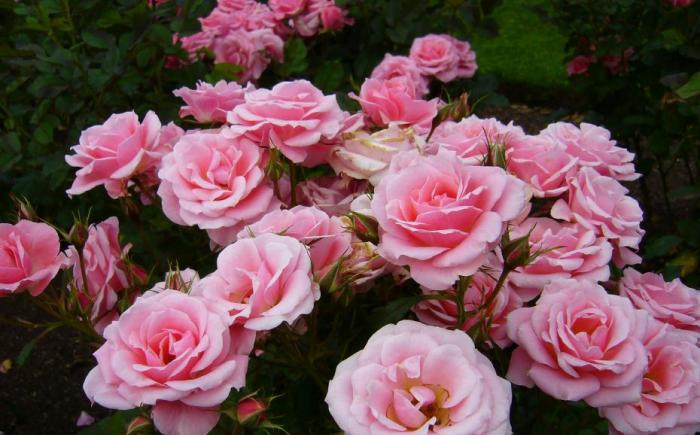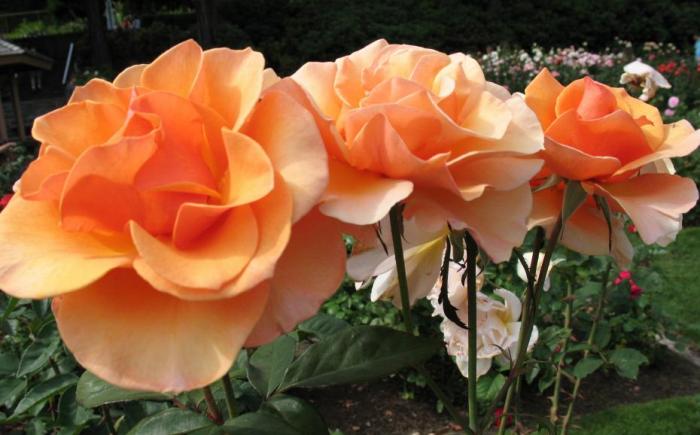
Roses are enjoying renewed popularity - specifically, shrub roses and old garden roses. Gardeners realize that these roses fit the lifestyle of today's gardeners who want roses that are not as demanding with regard to disease control, offer excellent floral quality, have excellent winter hardiness, and fit into shrub borders and perennial gardens without seeming out of place.
To be successful in growing roses in Chicagoland, one needs to be aware of some basic considerations. Attention to plant selection, a basic knowledge of the wide array of classes available, basic culture information, and information about potential disease and insect problems will go a long way in making roses an enjoyable addition to the garden.
Alsip Home & Nursery carries top brands such as Knockout and P. Allen Smith and hundreds of different roses from that include shrub roses, climbers, hybrid teas, grandifloras, floribundas, and more. For best selection shop late April or early May!
Different Varieties
Roses are a shrub or vine that is equally known for it’s magnificent flowers and not so magnificent thorns.
- Patio Tree: About 4 feet off the ground, usually a Floribunda variety but commonly you will now see Knockout Rose trees which are very popular.
- Miniature: We carry mini roses usually in the greenhouse and only during certain seasons. Usually a 4” or 6” pot.
- Floribunda: Known for large clusters of medium sized flowers
- Hybrid Tea: Often used as a cut flower, known for single, sculptural, high centered flowers per stem. They get about 5 feet high
- Climber: Actually a shrub with long, arching stems that get 6 to 20 feet high when trained on walls, trellises and fences. Training the stalks in a horizontal position promotes bloom production.
- Grandiflora: Similar to hybrid teas, they are identified by their unique ability to send up clusters or large hybrid tea like flowers on strong stems. They get 6-8 feet tall.
- Groundcover: Carpet Roses are the main one we sell. They are low growing, spreaders that are low maintenance
- Modern Shrub: Recent hybrids from native shrub roses. Most notably that we sell the most of are the Knockout Rose series
- Standard Tree Rose: Usually a hybrid tea or a Floribunda variety about 6 feet off the ground
Watering Roses
- Under normal conditions, roses that are planted in the ground need 1 inch of water per week
- Whether this comes from rainfall or other sources such as your home irrigation system does not matter
- Soil conditions may vary in which case more or less water is required. For example; sandy soil dries out quickly and more frequent watering is required.
Clay soil retains moisture and over watering in clay soil can cause root rot.
Over Wintering Roses
- In Chicagoland’s harsh winter climate, roses are prone to die back.
- It is best to protect the bases of the canes by adding mulch or soil to cover them
- You will want to cover tender roots that are closer to the soil surface as best as possible.
- Rose trees may be bent down to the ground and completely covered with mulch or soil. This will protect the entire plant. You will need to re-stake the plant in the spring.
- It is recommended that climbing roses are protected by wrapping them in burlap for the winter.
- In fall, prune your stems about 24” above the ground
- Mound either mulch or soil 12” up the base or until the bud union is covered. In spring, prune off any exposed parts of the canes that have died off.
- A rose cone can then be placed over the entire plant and weighted down with bricks. If the canes don’t fit, tie them together with twine.
Pruning Roses
- Regular maintenance for pruning roses is as simple as removing dead blooms also known as deadheading.
- There is a trick to properly prune a rose bush
- The cut should be made about ¼ inch above a bud or a five-leaflet leaf set at a 45 degree angle sloping away from the bud or leaf petiole.
- This encourages more flower bud production.






